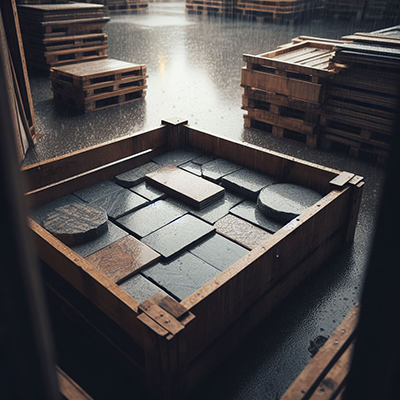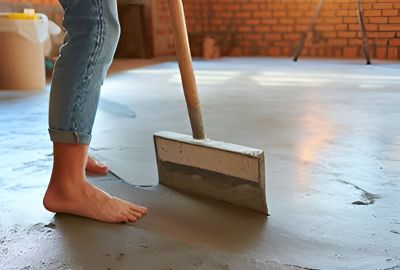Why are my natural stone tiles wet when delivered?
When ordering any set of tiles for your next renovation project, the last thing you probably expect is to receive a delivery that is slightly wet. And once the surprise and confusion has worn off, the first thing you’re probably wondering is, why?
If you have received a set of wet tiles in the past - specifically natural stone tiles - then don’t worry. It is completely normal for sets of stone tiles to be somewhat damp by the time they’re delivered, and this extra moisture should not be a cause for concern.
However, if you are curious as to why stone tiles become wet during delivery, this article will hopefully sate your curiosity.
Why do stone tiles get delivered wet?
In order for natural stone to be successfully transformed into your brand-new tile set, there are numerous processes that this material needs to go through, plenty of which involve the use of water.
For starters, water is primarily used as a lubricant of sorts to aid in the manufacturing process, as well as keeping the blades of the cutting machinery cool while the stone blocks are chopped into strips and then squares.
As a result, while all of this is going on, excess water not evaporated during the manufacturing process is instead absorbed into the tiles, as all forms of natural stone are porous to some extent.
Once finished, the freshly cut tiles are then packed into wooden crates for export across the world, and more often than not, they will still be full of the water absorbed during the cutting process.
What this means is that this water will slowly start to seep out over the course of their journey to our warehouse, and much of it will probably still be in there when they arrive at your home as well. Hence why your tiles might be wet on arrival!
What type of stone is most likely to be wet?
Although all types of stone are porous to some extent, some types are more porous than others.
Soft limestone tiles, for example, and pretty much all travertine stone, are quite porous and retain a high amount of water. Granite and marble tiles, on the other hand, tend not to retain much water at all, meaning their moisture content is practically unnoticeable.
Travertine tiles in particular - especially honed and filled travertine - are always wet when they’re packed, as the honing is performed with copious amounts of water.
The tiles themselves are sat flat on a machine bed with water sprayed across them as the honing machine finishes the surface, meaning they absorb a lot of water. Then, at the end of the production line, they’re packed into crates without having time to dry out.
Can I still install wet tiles?
In most cases, installing your tiles while they’re wet poses no issues, and often, by the time you lay them, they will already have dried out. In fact, the dampness of wet tiles can actually help stop your adhesive from drying out too quickly, assuming they are only slightly damp.
It is, however, always good practice to take any wet tiles out of their crate and bring them into the property so that they can ‘breathe’ to an extent and start to dry out. Otherwise, if your tiles are really porous, they could draw the water out of the adhesive before it has had time to cure properly, affecting its overall adhesion strength.
So, now you know why natural stone tiles sometimes get delivered wet! As we pointed out, this is no cause for concern, and you can get your tiling project started as soon as you’re ready.
Naturally, if you do have other questions surrounding tiles and tiling, you can get in touch with the Stone Superstore team today. You can also browse the rest of our tile installation advice for more helpful articles like this one.


